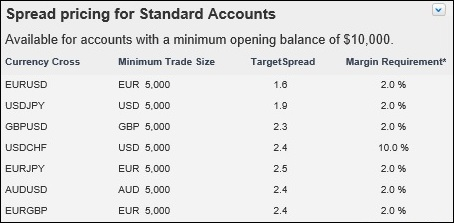By Pam Martens and Russ Martens: January 20, 2015
 After blowing up in spectacular fashion in 2008, receiving the largest taxpayer bailout in the history of modern finance, Citigroup’s FDIC-backed bank, Citibank N.A., is allowing retail customers around the globe to gamble in the high-risk world of currency trading with leverage as great as 50 to 1.
After blowing up in spectacular fashion in 2008, receiving the largest taxpayer bailout in the history of modern finance, Citigroup’s FDIC-backed bank, Citibank N.A., is allowing retail customers around the globe to gamble in the high-risk world of currency trading with leverage as great as 50 to 1.
It has been more than four days since wire services reported that Citigroup’s trading desk had lost more than $150 million as a result of Switzerland’s central bank removing the cap on the Swiss Franc’s peg to the Euro. During that time, Citigroup does not appear to have demanded a correction or retraction. Thus, that much of the story has made it into the hands of the public.
What is not widely known is that Citigroup, a global behemoth bank which is on a short tether by the Federal Reserve after failing its stress test last year and in previous years since its crash, is branding itself as the go-to place for retail clients wanting to gamble in the high-stakes world of currency trading with a starting account size as small as $10,000. In addition, the account can be leveraged up on margin provided by Citigroup’s insured banking unit by as much as 50 times.
According to the FDIC’s data as of September 30, 2014, Citibank N.A., the unit of Citigroup offering the currency trading to retail clients, had total assets of $1.377 trillion; domestic deposits of $443 billion; and foreign deposits of $505 billion. In other words, in terms of its deposit base, Citibank is more foreign than it is domestic, but it’s the U.S. taxpayer that will be on the hook if it implodes again.
The last time Citigroup came hat in hand for a bailout, from December 2007 to July 2010, it received $45 billion from the Troubled Asset Relief Program (TARP), over $300 billion in asset guarantees, and $2.513 trillion in low-cost loans from the Federal Reserve according to the Government Accountability Office.
With that recent history, why are its regulators allowing it to take on potentially perilous trading activities? When retail clients end up owing money to a bank in a highly leveraged currency trade, the bank can easily end up stuck with the losses. That’s the part of this Swiss Franc story we haven’t yet heard about: how much is Citi on the hook for retail client losses?
There is the additional question as to whether a U.S. subsidized bank that is attempting to restore its reputation after a decade of outrageous missteps should be an enabler to retail clients to engage in a sure-fire way to lose their money.
Last year the French regulator, Autorité des Marchés Financiers or AMF, released a study showing that during a four-year survey, 89 percent of clients lost money trading foreign currencies. The U.S. organization, the National Futures Association, has said approximately 72 percent of retail clients lose money trading currencies.
Citibank’s risk disclosures on its CitiFx Pro web site provide potential insight into why the bank is involved in this highly problematic area:
“Trading is not on a regulated market or exchange—your national bank is your trading counterparty and has conflicting interests. The retail forex transaction you are entering into is not conducted on an interbank market nor is it conducted on a futures exchange subject to regulation as a designated contract market by the Commodity Futures Trading Commission. The foreign currency trades you transact are trades with your national bank as the counterparty. When you sell, the national bank is the buyer. When you buy, the national bank is the seller. As a result, when you lose money trading, your national bank is making money on such trades, in addition to any fees, commissions, or spreads the national bank may charge.”


